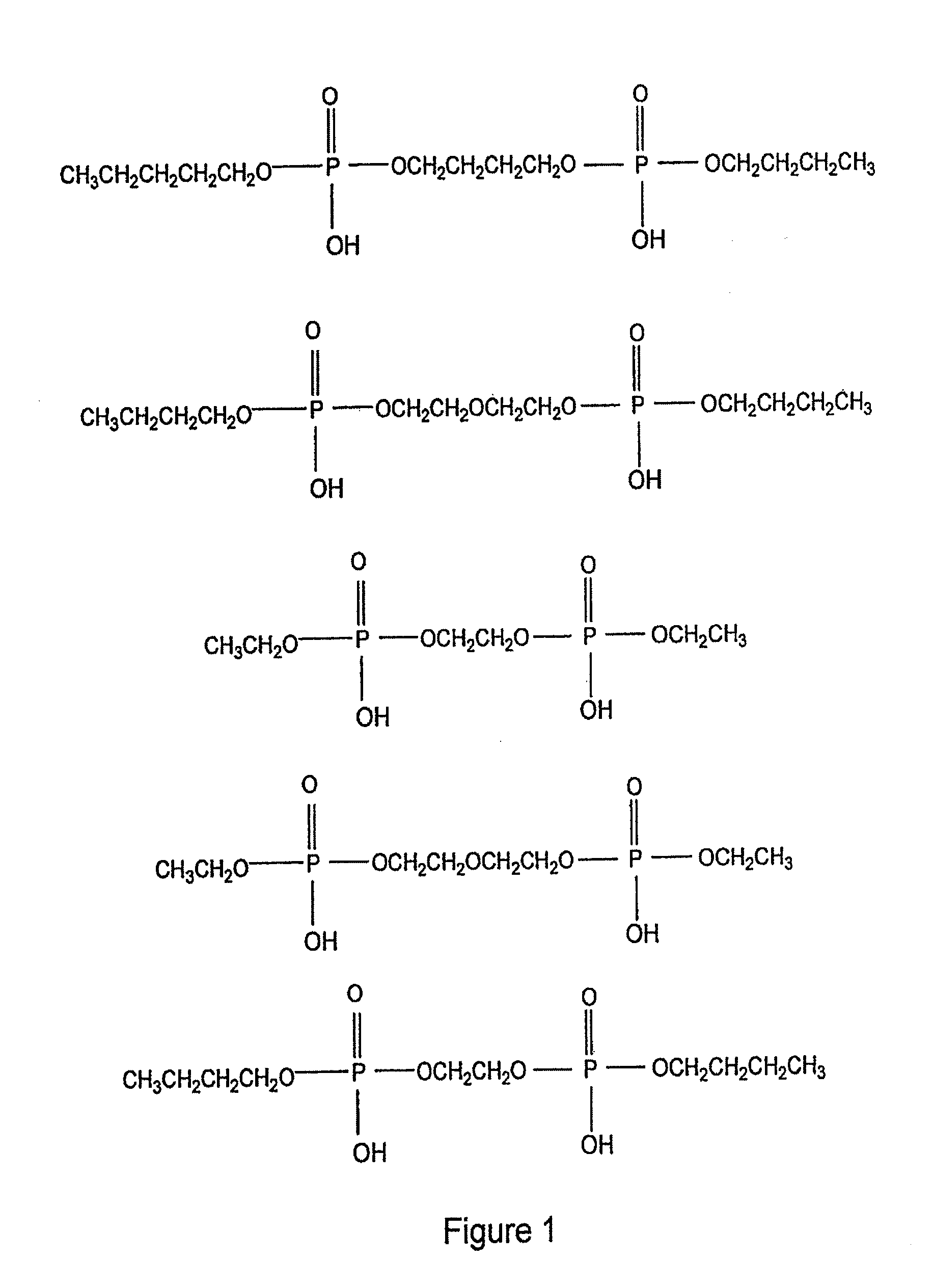Antimicrobial and Antiviral Compounds and Methods for Their Use
a technology of antiviral compounds and compounds, applied in the field of therapeutics, can solve the problems of difficult control, ineffectiveness of conventional antibiotics, and refractory particulate bacterium treatment with conventional antibiotics
- Summary
- Abstract
- Description
- Claims
- Application Information
AI Technical Summary
Benefits of technology
Problems solved by technology
Method used
Image
Examples
example 1
Bacterial Growth Studies in a Burn Model
[0174]Burn wound infection in mice can be established by subcutaneous or topical administration of the bacteria to the sites of the burn. In order to demonstrate the anti-microbial activity of the compounds of the present invention, the ability of such compounds to prevent burn wound infection was studied.
[0175]Six-week old BALB / c female mice were obtained from the mouse breeding colony at DRES, with breeding pairs purchased from Charles River Canada Ltd. (St. Constant, Quebec, Canada). The use of animals described in this study was approved by DRES Animal Care Committee. Care and handling of animals described in this study followed guidelines set out the Canadian Council on Animal Care.
[0176]Pseudomonas aeruginosa (Strain Utah 4) was initially cultured on the tripticase soya broth, aliquotted and frozen at −70° C. Prior to use, aliquots were thawed and diluted serially in sterile PBS just prior to administration into animals. To ensure viabil...
example 2
Subcutaneous Treatment with a Protonated Monomer
[0179]To determine the effectiveness of protonated compounds for the treatment of burn wound infection, mice were subcutaneously infected with 5 LD50 of P. aeruginosa as described above. Mice were then treated in the following manner. For treatment of systemic infection (infection by subcutaneous injection of the bacteria), mice were treated at 2 and 8 hrs post infection. Three groups of mice were treated with protonated Nu-3. Group 1 received a subcutaneous injection of 100 μl 35 mg / ml protonated monomer; Group 2 received a subcutaneous injection of 17.5 mg / ml protonated injection; and group three received no monomer. All (5 out of 5) treated Group 1 animals survived, 2 / 5 animals of group 2 survived, and no control animals survived the burn infection.
[0180]The bacterial load was determined using the blood and, organs of experimental animals. Blood, spleens, livers and the burnt skins were aseptically removed. The blood (100 μl) was se...
example 3
Treatment of Tinea Pedis
[0184]A 75 year old male with diabetes presented with an acute case of tinea pedis. This infection had been treated with conventional antifungals for a period of over a month with little progress made in clearing up this fungal infection. Treatment of the site of tinea pedis was initiated using a topical solution of Nu-3 at a concentration of 31 A260 / ml. Treatment of the area continued once a day for three days. At the end of the three-day period, the infection appeared to be completely eradicated.
[0185]The results of this experiment indicate that the compounds of the present invention were effective for the treatment of tinea pedis.
Example 4
Antimicrobial Activity of Compound Nu-4
[0186]The antimicrobial activity of the compounds of the present invention was further demonstrated by incubating various microorganisms in the presence of Compound Nu-4 of the present invention. For such incubations, a stock solution of Nu-4 (12.7 mM) was diluted using 5 sequential ...
PUM
 Login to View More
Login to View More Abstract
Description
Claims
Application Information
 Login to View More
Login to View More - R&D
- Intellectual Property
- Life Sciences
- Materials
- Tech Scout
- Unparalleled Data Quality
- Higher Quality Content
- 60% Fewer Hallucinations
Browse by: Latest US Patents, China's latest patents, Technical Efficacy Thesaurus, Application Domain, Technology Topic, Popular Technical Reports.
© 2025 PatSnap. All rights reserved.Legal|Privacy policy|Modern Slavery Act Transparency Statement|Sitemap|About US| Contact US: help@patsnap.com



